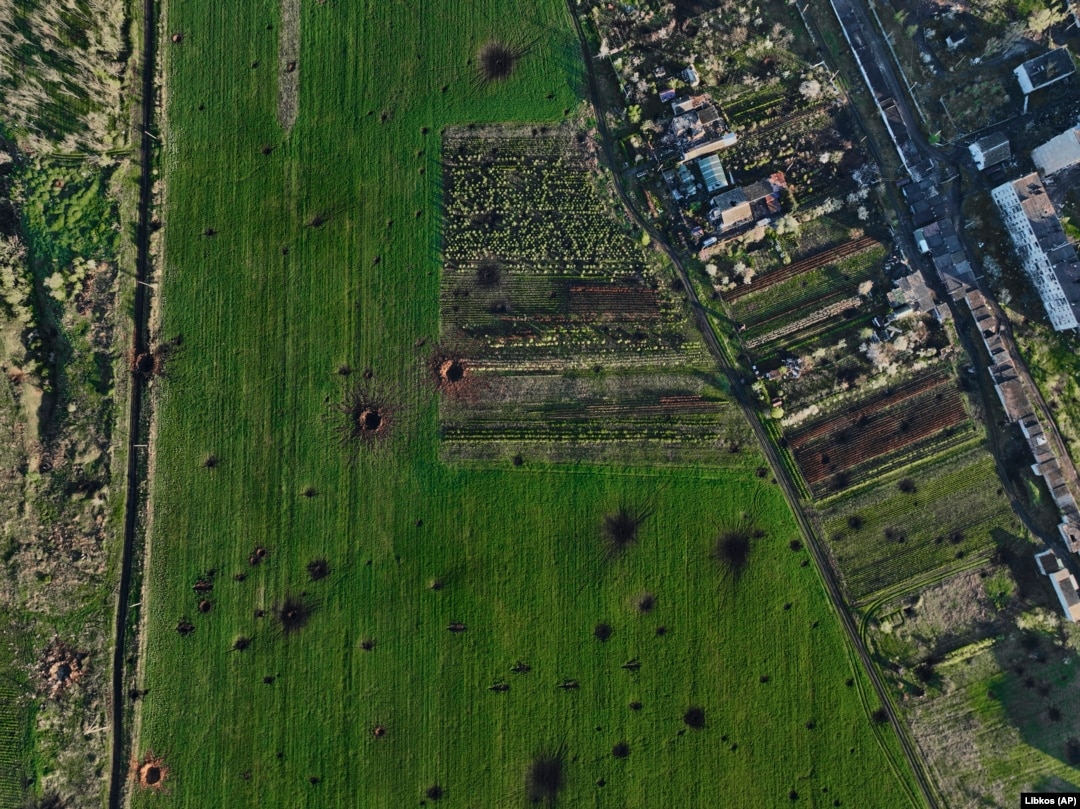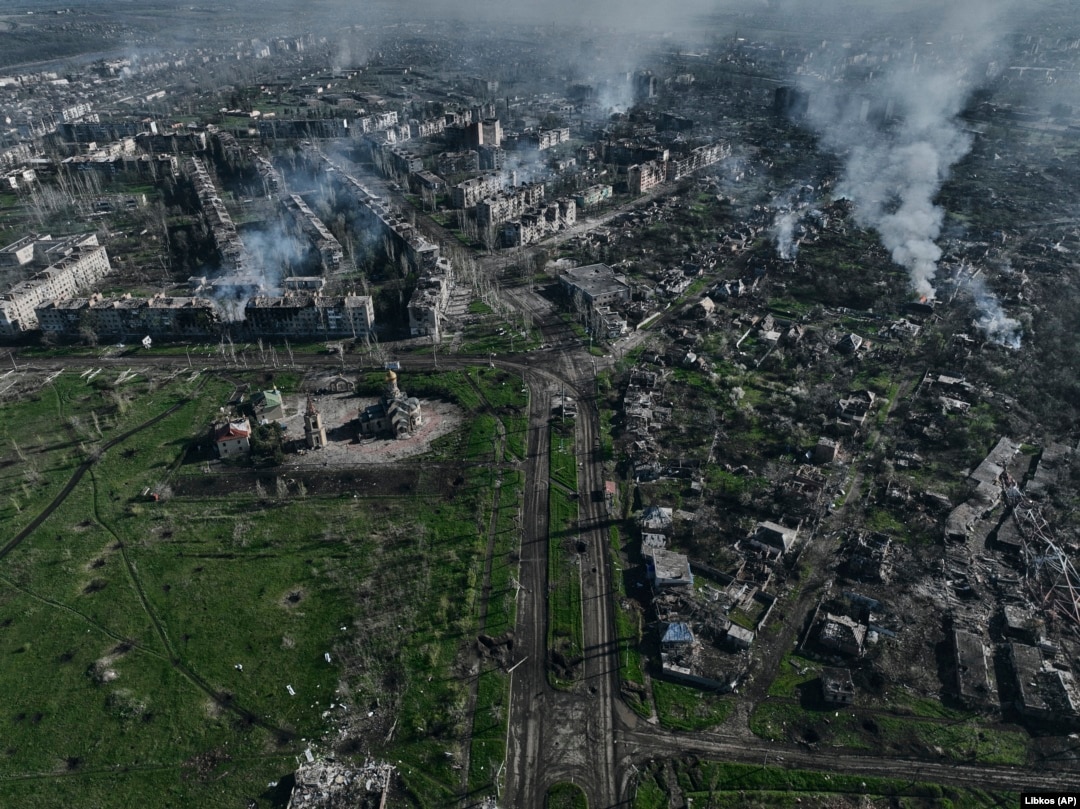Bakhmut From The Air Reveals Devastation As Russia Pounds Ukrainian City Into Dust

Smoke rises from burning residential buildings in Bakhmut on April 26. Despite Russian forces increasing their use of heavy artillery and air strikes, Kyiv's forces continue to stymie their ability to take full control of the ruined city.

The cratered landscape of a Bakhmut field.
Serhiy Cherevatiy, spokesman for Ukraine's eastern forces, said on April 26 that Russian forces had attacked 324 times using artillery and multiple rocket launchers within the past 24 hours.

"The Russians are destroying buildings in Bakhmut to prevent our soldiers from using them as fortifications," Cherevatiy said.
For nine months, Moscow's forces have tried to seize the Donbas city, which has become a symbol of Kyiv's steely determination and the Kremlin's military failures.
Russia's Wagner mercenary group has spearheaded much of the advance into Bakhmut, claiming earlier in April that its forces controlled 80 percent of the city, something refuted by Kyiv.
Ukrainian President Volodymyr Zelenskiy vowed to keep defending the city.
“It is impossible for us to give up on Bakhmut because this will [help] expand the battle front and will give the Russian forces and Wagner [mercenary group] chances to seize more of our lands,” Zelenskiy said on April 23.
It's estimated that thousands of soldiers from both sides have been killed in the so-called Bakhmut "meat grinder." Taking control of the city would allow Moscow to focus its forces on westward Ukrainian garrisons around Chasiv Yar and deeper in the Donetsk region where the industrial cities of Kramatorsk and Slovyansk are located.
Kyiv admits that its forces have paid a heavy price defending "Fortress Bakhmut," a city that held around 70,000 people before the Russian invasion.

